Bee products are very useful. Honey is one of the most popular ingredients in homemade masks. But you can also use other products, in particular bee glue or propolis. Let's figure out how to properly use propolis for wrinkles so that the reflection in the mirror evokes only positive emotions.
Product Description
The substance with which bees seal the cracks that appear in the hive is called bee glue or propolis. Bee glue is produced by worker bees that collect resin from buds and young leaves.
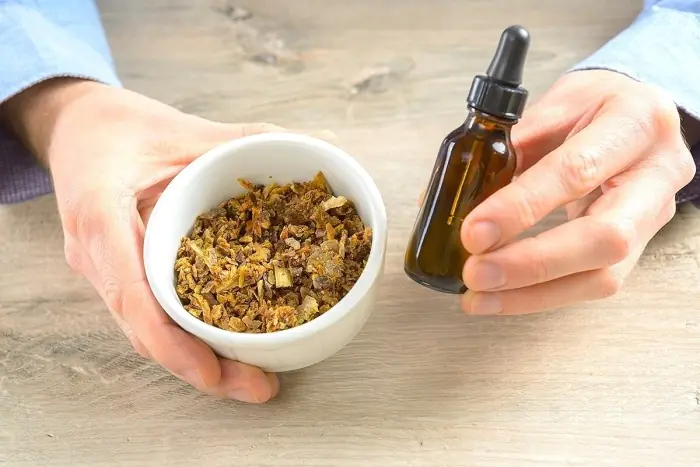
Natural propolis looks like a solid mass, its color depends on what raw materials the bee used. Propolis is most often brown with a reddish tint. But it can be brown-green or even black. The smell of the substance is specific, but quite pleasant. The taste is bitter.
People have long learned about the healing properties of bee glue. Even the ancient Egyptian priests used this remedy for embalming the dead. Propolis is also widely used in medicine. This substance is a strong antiseptic with a wide spectrum of action. It is able to destroy bacteria, fungi and viruses, relieves inflammation and pain.
The use in cosmetology is due to the ability of propolis to stimulate cell renewal, as well as provide them with protection from various negative factors.
Compound
Bee glue has a rather complex composition, it contains:
- resins – approximately 55%
- natural wax – about 30%
- tannins – from 15 to 35%;
- minerals – about 20%;
- ethers – approximately 10%.
In addition, this substance contains nicotinic acid, thiamine, and retinol.

Chinese Candy Lo is a woman who has completely conquered aging. At 52 years old, she continues to act and make plans for her life. What is the secret of her eternal youth?
Read more…
Application
When planning to use propolis on your facial skin, it is best to purchase natural bee glue from an apiary. Using a pharmacy tincture is not the best option, since such tinctures are prepared with alcohol, which dries out the skin greatly. The use of alcohol tincture is justified only when caring for very oily or problematic skin.. In the latter case, the alcohol tincture should be applied pointwise to the areas of inflammation.
You can make homemade tincture or various masks from natural propolis; recipes for preparing cosmetic products will be given below.

In a new interview, Sofia Rotaru shared her amazing secrets of beauty, long youth and creative plans.
Read more…
Indications
The use of propolis will help get rid of various cosmetic defects, namely:
- get rid of acne, relieve skin irritation;
- achieve healing of wounds - scratches, burns, herpes rashes;
- eliminate superficial wrinkles;
- provide epidermal cells with additional protection from negative factors;
- remove toxins from cells and intercellular space.
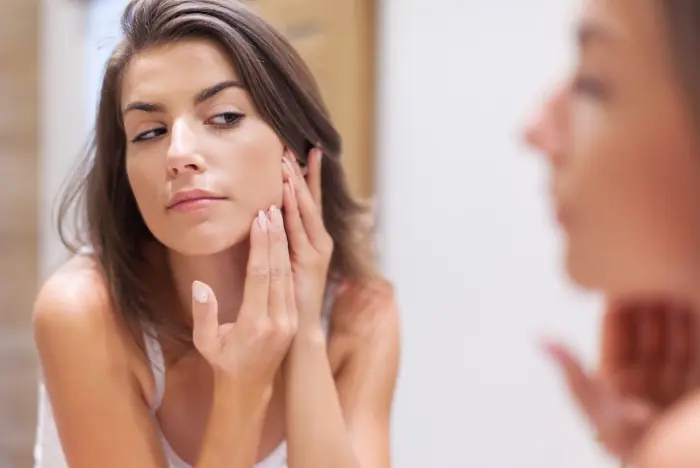
The product can be recommended to girls of different ages and with different types of epidermis. The main thing is to choose the right recipes for homemade cosmetics. The use of this tool will be especially useful:
- for problematic skin, on which purulent pimples often form;
- to prevent the appearance of early signs of aging;
- for aging skin to eliminate superficial wrinkles and tighten.
Precautionary measures
Important! Propolis, like other bee products, is a strong allergen. Therefore, it is strictly forbidden to apply cosmetics with natural bee glue to the face without first testing for skin sensitivity.
Just apply a drop of infusion to your wrist and watch the reaction. If the skin turns red, there is a burning sensation, itching or rash, then the product should not be used. If there are no negative reactions within 24 hours after application, you can safely use bee glue to prepare homemade cosmetics.

In a new interview, Sofia Rotaru shared her amazing secrets of beauty, long youth and creative plans.
Read more…
Preparing the tincture
At home, propolis tincture against wrinkles can be prepared in water, alcohol or oil. These tinctures are used in different ways:
- water can be used to prepare a tonic or lotion for sensitive, flaking-prone skin;
- alcohol will help fight excess fat and inflammation;
- oil – an ideal product for anti-aging care and massage.
Water
To prepare this product you will need:
- Pure water. It is better to buy distilled water for injection at the pharmacy, but if this is not possible, then you need to take filtered water and freeze it in the freezer. To prepare the tincture, melt water will be used.
- Natural propolis. You will need 30 grams of product for every 200 ml of water.
The tincture should be prepared in a clay or enamel bowl. First you need to grind the propolis very carefully. Pour clean water over the prepared raw materials, drain the liquid after five minutes, and dry the remaining sediment. Then add clean water again and heat in a water bath.
The preparation process is quite long; you will need to ensure that the beeswax dissolves in water, but it dissolves poorly. In this case, you need to remove particles that will float to the surface and throw them away. Having achieved the maximum possible dissolution of the raw material, you need to remove the container from the heat and let the tincture cool. After this, strain, pour into dark glass bottles and store them in the refrigerator.
Alcohol
To prepare this version of the tincture, you need to dissolve the raw material in medical alcohol, the ratio of components is one to ten. For example, for 50 ml of alcohol you need to take 5 grams of propolis. To dissolve the raw material more completely, it must be thoroughly crushed.
Place the crushed raw material in a dark glass bottle, fill it with alcohol and shake thoroughly for quite a long time. Place the bottle in the refrigerator for 10 days, remove and shake daily. Then strain.
Oily
To prepare an oil extract, you can use a ready-made tincture with alcohol. You can use olive, sea buckthorn, and rosehip oil as a base. The oil is mixed with an equal amount of propolis tincture, and the mixture is placed in a water bath. Heat for about an hour, this is necessary for the alcohol to evaporate. Store by pouring into a dark glass bottle in the refrigerator.
How to use tinctures?
You can simply add a few drops of tincture (the type of tincture is selected depending on the skin type) to finished cosmetics - belongings, masks, creams. This enrichment of the product will make the cosmetic more effective.
It is very easy to prepare based on alcohol or water tincture homemade tonic. To do this, you need to prepare a decoction of chamomile, sage or mint (you can mix all three herbs in equal quantities). Then take 25 drops of tincture per 50 ml of decoction. Apply toner twice a day to cleanse the skin.
Mask options
Masks with the addition of propolis tincture can be made 2-3 times a week. The course consists of 15 procedures, then you will need to take a break for at least a month.
Coconut
This composition option is recommended for dry, dehydrated skin covered with a network of wrinkles.
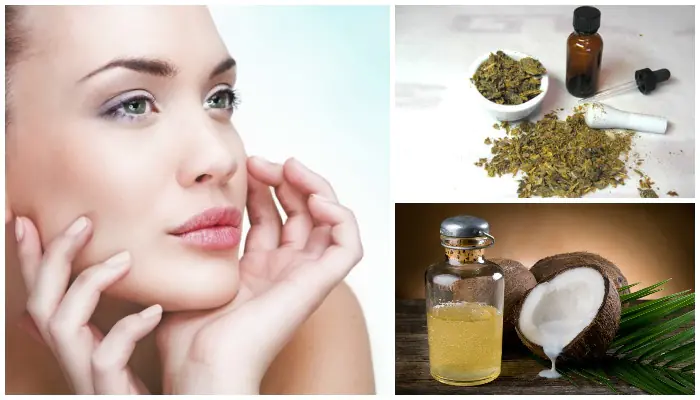
To prepare, you need to heat 15 grams of coconut oil until melted, then add a teaspoon of propolis oil tincture to the composition. Mix all. Apply to the entire surface of the face for forty minutes. Then remove the residue with dry cotton swabs or paper towels.
When planning to use propolis for wrinkles around the eyes, you can use the above recipe. You need to moisten clean gauze pads in a warm oil mixture and apply them to problem areas. It is recommended to cover the top of the compresses with pieces of parchment, and then place a terry towel on the face, which is recommended to be preheated (for example, on a heating radiator). After half an hour, the compresses are removed, and the remaining oil mixture is carefully removed with cotton swabs. You can wash your face only half an hour after the procedure.
Bread
Recommended for problem skin with inflamed acne. You need to take a slice of rye bread without crusts, soak it in water and squeeze it well. Separately, beat the egg whites until fluffy and mix with the bread mixture. Add 20 drops of bee glue tincture with alcohol. Apply to skin for twenty minutes.
Oatmeal
The composition perfectly rejuvenates and is suitable for aging epidermis. For cooking you will need oatmeal. This product can be easily prepared at home using an oatmeal grinder.
A heaped tablespoon of oatmeal should be diluted with a small amount of water or milk so that a thick “dough” is obtained. Then add twenty-five drops of wheat germ oil and water tincture of propolis into the mixture.
Honey with semolina
This option is suitable for aging skin, as it perfectly rejuvenates and smoothes.
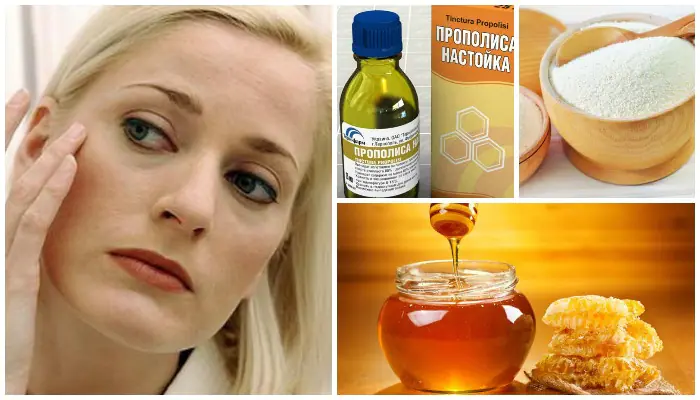
A dessert spoon of honey needs to be heated and combined with propolis oil tincture, stirring until smooth. Then add a teaspoon of semolina into the mixture and let the mixture stand for about a quarter of an hour. Apply for thirty minutes.
With clay and essential oils
The mask is recommended for mature skin, as it smoothes and tightens.
A tablespoon of red clay should be diluted with cold infusion of green tea. Add to the thick mixture:
- 20 drops of propolis oil tincture:
- 5 drops of geranium ether;
- 3 drops of sandalwood oil;
- 2 drops of lemon ether.
Apply the composition for a quarter of an hour.
Apple peeling
This composition is used to remove the top layer of keratinized epidermal cells. For preparation, natural apple cider vinegar is required. In no case don't use regular vinegar!
20 ml of apple cider vinegar is mixed with the same amount of clean water and 20 drops of propolis alcohol tincture. Potato starch is diluted with the resulting mixture to obtain a fairly thick mass. Apply the composition to the skin in a thick layer, rinse off five minutes after application. Do not use this recipe if you have sensitive skin.
Curd
This anti-aging formula hydrates and smoothes. The basis is fresh cottage cheese with a fat content of 9% or more. 50 grams of the product must be thoroughly ground, adding a little sour cream or cream. Add a teaspoon of propolis oil tincture into the creamy mass. Apply to face for thirty minutes.
Banana
This composition is great for rejuvenating and removing signs of fatigue. The mask can be used as an express remedy if you need to quickly refresh your face after a busy day at work or after a sleepless night.
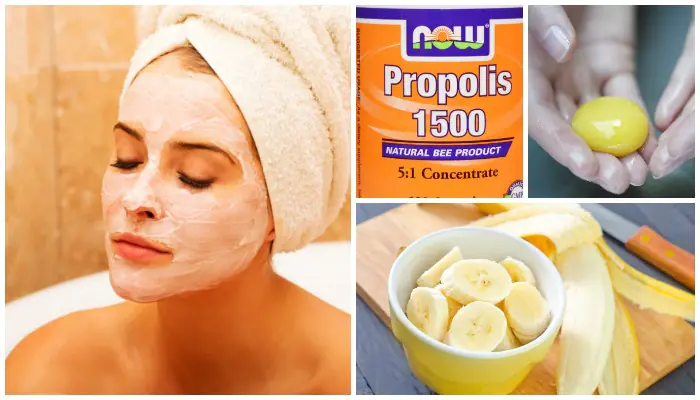
Mash half a ripe banana to a puree and mix with fresh egg yolk. Add a teaspoon of propolis oil extract to the mixture. Apply a thick layer to the face, rinse after forty minutes.
Cosmetologists' opinion
Propolis is a unique natural substance that has the properties of destroying pathogenic microorganisms and accelerating metabolic processes. Bee glue tincture is recommended for the treatment of acne. As for rejuvenation with the help of this natural substance, you should not expect a miracle. Of course, homemade masks will refresh the skin and help smooth out superficial wrinkles, but they won’t be able to deal with deep folds.
Remember! Propolis often causes allergic reactions, so first you need to make sure that your skin is not hypersensitive to this substance.
Women's opinion
Women who have used propolis to care for their skin leave good reviews.
I started using propolis a month ago in the form of a water tincture. I have problem skin, covered with comedones, and inflamed acne often appears on my face. Within a month of using the tincture, the skin became significantly cleaner, painful inflammation no longer appeared, and the complexion became healthier and more even.
I take very good care of my skin, so I look younger than my age. But just a few years ago a network of wrinkles appeared under my eyes, which I struggled with with varying degrees of success. But propolis just saved me. The bags on the lower eyelids disappeared, wrinkles smoothed out, and even the upper eyelids tightened up a little. In a word, I am very pleased! I recommend this product to everyone, but keep in mind that it can cause allergies!
Propolis is very useful for the skin of the face, and for the skin in general, due to the numerous beneficial properties of this beekeeping product. As scientists say, propolis is one of the few substances in the world that contains almost all the vitamins and nutrients necessary to maintain life.
Unlike honey, propolis consists of the resinous substance of deciduous tree buds and the resin of coniferous trees, and its color varies from brown to green.
Bees use propolis as a substance to disinfect the hive, as well as to seal cracks and isolate foreign objects in the hive. It is also used by bees to protect their hives from adverse weather conditions and pests such as insects and even bears.
Scientists have proven that bees also use propolis to inhibit the growth of harmful pathogens in hives, such as bacteria and fungi.
A number of studies have found that propolis has antimicrobial properties, especially in relation to human health. For example, numerous publications quote that propolis has a strong antiviral and antibacterial effect and even helps destroy cancer cells (see Propolis for immunity and cancer treatment).
As you know, propolis has the following pronounced beneficial properties:
- antiviral property
- antifungal property
- anti-inflammatory property
- antibacterial property
Due to the fact that propolis is a natural product with numerous beneficial properties, it is used for various purposes, both for the prevention and treatment of many diseases (see What propolis treats: list of diseases). The skin of the face and the whole body is no exception, because propolis can not only protect our skin, but also treat it. Centuries of experience and scientific research tell us that propolis is successfully used for:
- skin lesions
- in surgery
- skin wounds
- burns
- ulcers
- skin and eye diseases
- in gynecology
- and of course, propolis has gained great popularity in the form of cosmetics
History tells us that people have used it for thousands of years due to its antibacterial and anti-inflammatory properties.
Modern research shows that the use of propolis gives good results in the treatment of many types of skin diseases.
Topical use of propolis for skin diseases
Studies have shown the effectiveness of propolis in the treatment of athlete's foot, skin tuberculosis, alopecia, psoriasis, various microbial and chronic eczemas, pyoderma, skin inflammation associated with trichophytosis, as well as burns. Propolis can be applied to the skin in the form of:
- 10-50% propolis ointment or cream
- 10-20% water tincture of propolis
- propylene glycol containing 3.6% propolis
- or even an alcoholic infusion of propolis
You can buy ready-made propolis-based products or prepare them yourself, read about here - Propolis. Cooking recipes. Propolis tincture.
Other methods of external use of propolis
The use of propolis for herpes, herpes zoster, genital herpes and hemorrhoids gives very good results (see How to prepare ointment with propolis for hemorrhoids). Egyptian propolis and more are successfully used to treat skin for various types of warts.
Warming patches with propolis and beeswax can be used to treat arthritis and arthrosis, sprains, physical injuries, inflammation of muscles, nerves and body tissues. Propolis ointment is also effectively used for these purposes.
However, when using propolis externally, you need to be careful, as it can cause an allergic reaction in some people. Before using it, make sure that applying propolis to your skin does not cause an allergic reaction.
Why is propolis used in cosmetics?
Propolis is used in medicinal cosmetics due to the fact that it has antibacterial, antifungal, antiviral and anti-inflammatory properties. Propolis effectively eliminates acne and pimples, improves microcirculation in skin tissues, reduces pain and slows down the aging process. It has low toxicity and good skin compatibility, despite the risk of allergic reactions.
As a rule, 1-2% propolis is added to skin lotions and cosmetic creams.
Propolis is used:
- In deodorants and antiperspirants as an antibacterial agent.
- In shampoos and hair lotions, as it eliminates dandruff and regulates sebum secretion.
- In anti-acne products, since propolis has an antimicrobial effect.
- In aftershave products, as it helps eliminate inflammation and rapid healing of damaged skin areas.
- In skin cleansing creams and lotions, as it contains cleaning agents and serves as a natural preservative.
Propolis is also an excellent oral care product. According to S. Bogdanov, propolis can be used as a cosmetic for the skin and oral cavity to prevent various dental problems, such as:
While using propolis from baccharis does not cause any problems, you should still test yourself for allergies before using propolis, which is predominantly sourced from poplar.
What are the benefits of propolis for facial skin?
Thanks to its antibacterial and anti-inflammatory properties, propolis helps prevent and treat herpes on the lips. Propolis helps reduce the appearance of facial wrinkles and smoothes the skin, helping to retain more moisture, which makes your skin more youthful, soft and beautiful. Propolis perfectly cares for sensitive skin and helps reduce redness in case of any irritation. This redness may be associated with acne and pimples that occur on the face, especially during adolescence. Propolis helps to effectively combat various types of rashes on the facial skin and eliminates minor and moderate forms of acne.
Propolis for facial skin: relieves inflammation, eliminates pimples and acne
Research
№1. In a study published on hindawi.com, conducted in 2013 at a burn center in Brazil, the effectiveness of Brazilian propolis skin cream was compared with silver sulfadiazine in the treatment of minor burns (superficial second degree), where the burn covers less than 20% of the total surface area bodies.
The study found that wounds treated with propolis skin cream were less inflamed and scarred faster than wounds treated with silver sulfadiazine.
It was concluded that propolis skin cream has a beneficial effect on the healing of burn wounds. Regular use of propolis increases its antimicrobial and wound-healing effects.
№2. A review of studies conducted in Eastern Europe states that propolis is effective in treating ulcers, burns, healing damage resulting from radiation treatment of cancer and poorly healing wounds. Propolis is also used to accelerate wound healing after surgery and burns.
Cuban scientists recommend mixing honey, propolis and anise oil for a better healing effect.
№3. Other studies on the successful use of a 30% aqueous solution of propolis extract for skin lesions such as ischemic ulcers, trophic ulcers, venous ulcers, iatrogenic lesions and ulcers were also analyzed. Positive results are observed after the first week of treatment. According to the authors of this study, wound healing effectiveness is closely related to the concentration of propolis in the solution.
№4. Another study using propolis ointment in the treatment of 22 chronic wounds (11 trophic ulcers, 7 pressure ulcers, 2 diabetic ulcers, and 2 wounds resulting from trauma) found that 8.2% of the affected tissue were necrotic. After treating the wounds with propolis extract, no necrotic tissue was observed. Healing time was 13.2 weeks. All patients with chronic wounds complaining of pain reported improvement.
Please note that natural products always work over an extended period of use, as they stimulate the human body to heal itself.
№5. S. Scheller from Poland treats his patients with an alcoholic extract of propolis for burns, leg ulcers, bedsores, osteomyelitis and infected wounds.
№6. In the Russian center, scientists used 15% propolis in animal fats or vegetable oils to treat burns. This ointment with propolis has an analgesic and bactericidal effect, and also accelerates wound regeneration. Propolis Heliant (a propolis-based preparation that also contains a mixture of sunflower oil and heavy fractions of dark natural wax) is successfully used to treat burns, wounds, skin diseases and for cosmetic purposes for facial skin.
№7. Scientists also tested the effectiveness of propolis in the treatment of patients after surgery for thyroid goiter, patients with difficult-to-heal and recurrent wounds and ulcers, and patients with nonspecific rectal inflammation. They also tested the effectiveness of propolis as an additional agent in the eradication of Helicobacter Pylori bacteria, which cause gastric and duodenal ulcers. The propolis preparation was found to be highly effective, very well tolerated and has virtually no side effects.
№8. In a study using propolis produced by bees from Baccharis, published in PubMed, it was found that optimal wound healing results could be achieved using propylene glycol containing 3.6% propolis. At this concentration, all bacteria on which the experiments were carried out died.
Ointments or creams with propolis, 10-20% aqueous or glycolic tinctures with propolis were used. Alcohol tinctures of propolis were not used.
Propolis is not only an indispensable assistant in traditional medicine recipes, but also an effective cosmetic product with which you can preserve the youth and beauty of your facial skin. Due to its rich composition, it is able to quickly relieve inflammation, smooth out wrinkles and protect the skin from premature aging, so everyone needs to know what propolis masks are and how they can be used.

The benefits of propolis in cosmetology
The cosmetic effect of propolis lies in its composition. The product is based on essential oils, fatty acids, as well as natural resins, the spectrum of action of which is incredibly wide. Practice shows that with the help of propolis, which is also called “bee glue” (after all, bees initially began to produce it in order to use it as an adhesive substance and protect the hive from the harmful effects of environmental factors), you can get a strong anti-aging effect - smoothing out wrinkles , normalization of skin tone, as well as improvement of skin color. Moreover, scientists have found that the product contains substances such as coffee ester and pinocembrin - they provide a powerful antibacterial effect, which makes it possible to stop inflammatory processes that often occur on oily skin, and also improve the functioning of the sebaceous glands, which are very often caused by disorders. acne develops or blackheads simply appear.
Using propolis on the face in its pure form is extremely inconvenient, because its structure resembles plasticine. In cosmetology, it is used either in the form of a water- or alcohol-based tincture, or in the form of a cream or mask. Moreover, it is worth understanding here that the tincture is usually used to wipe the skin, and if it is prepared on the basis of alcohol, then it is best to use it for oily skin, because this preparation will dry out dry skin even more.
In order to understand how useful propolis is in cosmetology, it is worth understanding that it is capable of:
- restore and sometimes even activate the protective functions of the epidermis;
- help remove toxins and poisons from the deep layers of the dermis and thereby return the skin to a fresh look and radiance;
- provide a rejuvenating effect, which is primarily observed in smoothing facial wrinkles and preventing their appearance;
- protect the skin from premature aging;
- provide a high level of antioxidant protection;
- stimulate the production of collagen and elastin fibers in the deep layers of the dermis, which ensures the formation of a strong framework of the skin and prevents sagging of the soft tissues of the face;
- increases skin permeability;
- normalizes the elasticity of capillary walls, combats vascular fragility and the appearance of spider veins.
In addition, propolis is also useful for the skin due to its bactericidal, antifungal and antibacterial effects, which not only can be used to treat infectious or fungal diseases of the skin, but also as a preventive measure for their development.
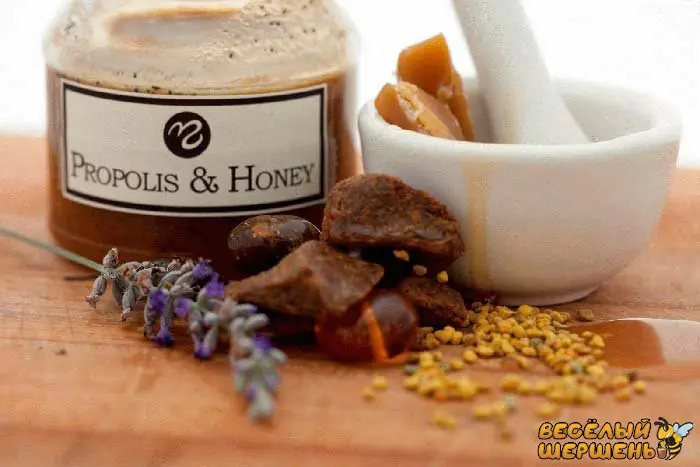
Using propolis for the face
When discussing the use of propolis, it is worth emphasizing that its effectiveness in cosmetology can be used in the form of several medicines. As mentioned above, it is impossible to use it in its pure form, because it has a rather dense structure, so cosmetics that are more convenient to use are prepared on its basis - tinctures, creams, masks or lotions.
Propolis tincture
First of all, propolis for facial skin is used in the form of a tincture, which is rich in useful components due to the fact that alcohol is an excellent extractant. The tincture can be made on a water, alcohol or even fatty basis.
The alcohol form of the medicinal substance is characterized by a rather specific aroma and is mainly recommended for the care of oily skin, because the alcohol itself slightly eavesdrops on the epidermis and enhances the antibacterial properties of bee glue.
You can buy preparations with propolis from us by calling one of the numbers:

Water tincture is less concentrated compared to alcohol tincture, but it cannot be called less effective. The difficulty here is that the aqueous form of propolis tincture must be prepared independently, because the shelf life of this medicine is quite short - only a week. There is nothing complicated in its preparation, because you just need to take natural propolis and dissolve it in water in a water bath. However, practice shows that propolis tincture for the face, prepared on the basis of alcohol, is still more convenient.
The oil form of tincture is the least common. Usually, the base is some kind of fatty oil, into which, when heated, esters, vitamins and microelements from bee glue are transferred. Suitable for providing comprehensive skin care, moisturizing the epidermis and activating its regeneration processes.
Alcohol tincture
Alcohol tincture of propolis for the face is sold ready-made or can be prepared independently. When preparing this drug, 10 grams of the active substance are added to 100 milliliters of alcohol. The bee glue must first be crushed, then placed in a dark glass bottle and filled with alcohol. Infusion time: 3-7 days with occasional shaking.
You can purchase the finished tincture at the family apiary “Veselyi Hornet”, whose specialists sell only high-quality preparations prepared in compliance with all technological aspects of preparing medicines based on bee products.
Based on the tincture, face masks with propolis are prepared, as well as products for wiping the skin - tonics and rubs.
Cream with propolis
You can use propolis against wrinkles in the form of a cream, which is prepared on a fat basis. Vaseline or lanolin, beeswax, and sometimes animal fat are usually chosen as a base, and all the ingredients themselves promote the healing of skin wounds, provide hydration and protection of the epidermis. However, the main effect is still provided by “bee glue”, which smooths out wrinkles, activates the production of collagen and elastin fibers, thereby increasing the elasticity and tone of the dermis, and at the same time fights pigmentation and protects against free radicals.
Propolis lotions
Looking through reviews of propolis for the face, one cannot help but notice that it is recommended to use it as a lotion based on a tincture, which can effectively combat acne, purulent rashes, as well as disturbances in the functioning of the sebaceous glands, which manifests itself in excessive oiliness of the skin. It is recommended to do lotions as follows:
- 60 milliliters of a healing herbal decoction (chamomile or calendula) are mixed with 30 drops of propolis tincture;
- A cotton pad is moistened with the resulting solution, after which it must be applied to the problem area for 5 minutes or simply wiped over the skin of the face.
Here it is worth paying attention to the fact that propolis tincture in cosmetology can be used on a water and alcohol basis. Aqueous does not contain alcohol, which means its use is safer; alcohol is better suited for caring for oily skin, although when using it you must carefully monitor your body’s reaction and exposure time to prevent burns.
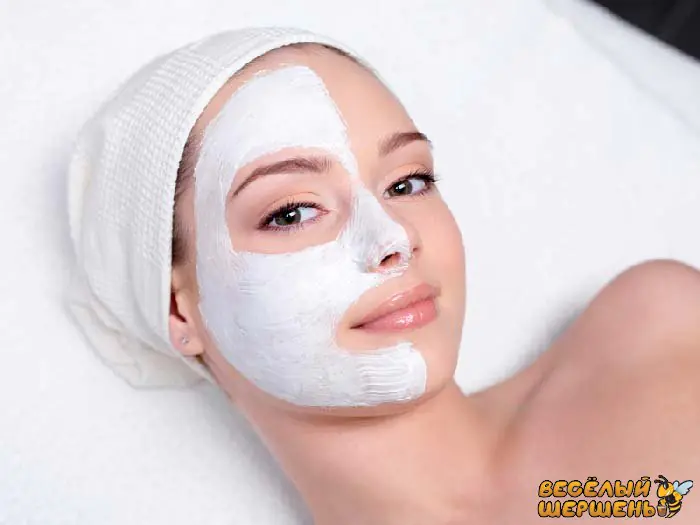
Homemade recipes for propolis face masks
Most often in home care, masks with propolis are used for the face, which are supplemented with other ingredients that enhance the main effects of bee glue. Additional ingredients may include butter or fatty oil, vinegar, eggs, other bee products, infusions and decoctions of medicinal herbs and plants, ampoule vitamins, and so on.
Mask recipes depend on what problem needs to be solved or what effect is obtained. However, if we summarize the information, we can see that in home care, masks are most often used that are aimed at combating signs of aging, moisturizing the skin and treating acne (pimples).
Anti-wrinkle mask
A popular mask with propolis for wrinkles is prepared based on the active ingredient and coconut oil, which is sold in a pharmacy or supermarket. Preparing it is quite simple, because for this you just need to melt about 10 grams of coconut oil in a water bath and add 2 grams of natural propolis shavings to it. The ingredients are mixed under constant heating conditions, and the resulting mixture should be applied to the face after it has cooled down and reached room temperature.
The mask is applied in a fairly thick layer over the entire surface of the face and neck (except for the area around the eyes), and after 30 minutes it is recommended to remove its remnants with a paper towel. It is not recommended to wash your face immediately after this procedure.
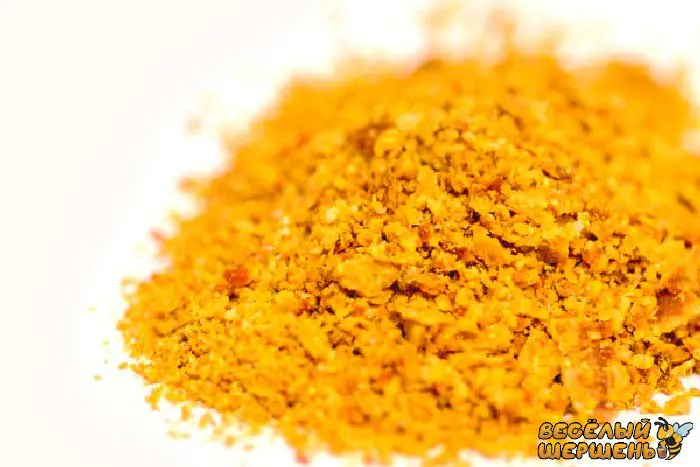
Acne mask
In cosmetics, propolis is often used as a mask for acne (due to its pronounced antibacterial and bactericidal effect). This product allows you to quickly cleanse pores of impurities, remove toxins and normalize the functioning of the sebaceous glands. The mask is prepared on the basis of black bread and egg whites. You need to take one protein and mix it with 10 grams of black bread pulp, then add 20 grams of propolis tincture to the resulting mixture and apply the mixture to your face for 20-25 minutes. The remaining product is washed off with water at room temperature.
An anti-acne mask with propolis is recommended for use at least two to three times a week - for treatment, or to prevent the development of acne - once every 7-10 days.
Anti-greasy mask with propolis
A mask with a tincture of propolis, wheat oil, and oatmeal will get rid of such problems as greasy shine. It gives the skin a matte appearance, normalizes the secretion of sebaceous secretions, and also softens the epidermis a little, so its use is recommended for people with oily skin.
The product is prepared as follows - two tablespoons of oatmeal are mixed with thermal water until a paste is formed, after which alcohol propolis tincture and wheat oil (half a teaspoon) are added to it.
The product is applied to pre-steamed facial skin for about 30 minutes, after which you need to wash with warm water.
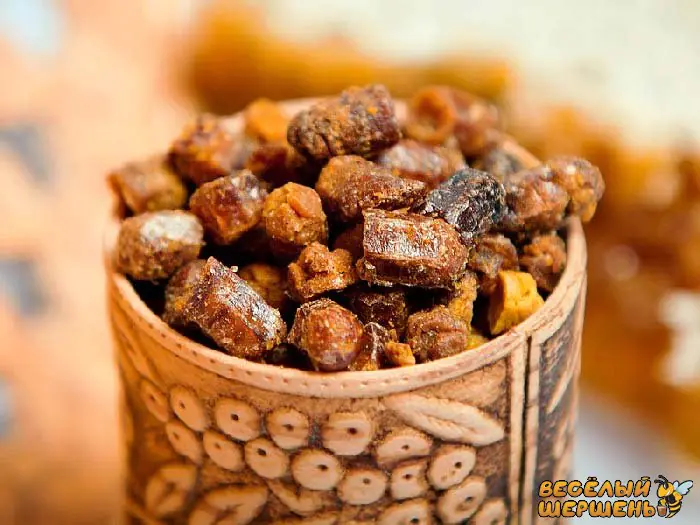
Mask for oily skin
A propolis mask for oily skin is prepared using yeast, which primarily provides a pronounced cleansing effect. It is recommended to combine two tablespoons of yeast (about 20 grams) with 1 milliliter of tincture, and apply the resulting mixture to the skin for 10 minutes, which will quickly narrow pores, get rid of oily shine and normalize the functioning of the sebaceous glands.
Mask for dry skin
A nourishing homemade mask with propolis is prepared with the addition of aloe and cocoa extract, which quickly and effectively moisturize and nourish the skin, and also help get rid of redness and peeling that appears on the surface of the epidermis for various reasons.
To prepare the mask, you need to mix 20 milliliters of aqueous extract of aloe leaves with 1 gram of crushed propolis and put the resulting mixture in the refrigerator for 24 hours. After the specified period of time, 10 grams of cocoa powder is added to the mixture and it is applied to the face. The exposure time is 15 minutes, and to obtain a pronounced moisturizing effect, it is recommended to repeat it once every 3 days.
Mask with propolis and honey
A mask with propolis and honey deserves special attention, because the combination of these two bee products gives a pronounced rejuvenating, moisturizing and nourishing effect. The recipe for preparing the cosmetic product is simple, because you just need to mix 10 grams of honey with 2 milliliters of propolis tincture and a tablespoon of semolina. The product is applied to the face in a thick layer and the exposure time of the procedure is 30 minutes, after which you need to wash your face and apply a cream according to your skin type (you can use propolis).
Mask with propolis and clay
Homemade masks with propolis prepared using clay have a good effect. Clay provides a tightening effect, but if you add natural “bee glue” or its tincture to it, then anti-inflammatory, tonic and antibacterial will also be added to the lifting effect.
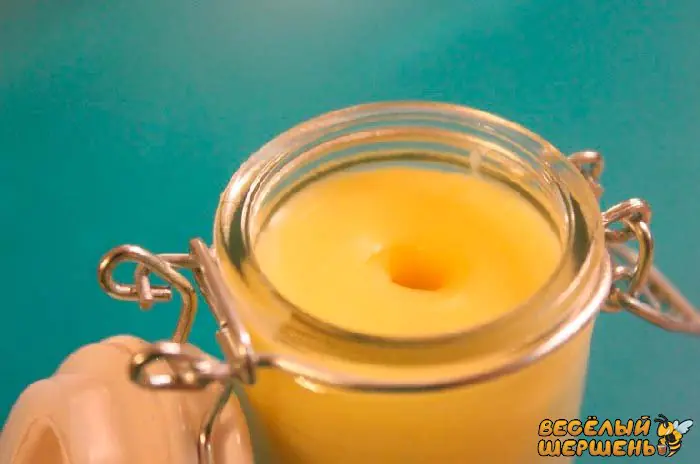
Mask with propolis and apple cider vinegar
As a mask with propolis for acne and pimples, a mixture with apple cider vinegar is recommended, which normalizes the functioning of the sebaceous glands, and also improves the condition and color of the skin. The basis of the product is starch, to which apple cider vinegar and propolis tincture are added. The product is applied to the face for 10 minutes, after which it is washed off with warm water. Finally, it is necessary to apply a nourishing cream to the skin to avoid dryness and flaking.
Rejuvenating mask
Any of the above propolis-based masks are suitable for use on the face against wrinkles, because to one degree or another they rejuvenate the skin. However, directly in order to obtain a pronounced rejuvenating effect, the mask is prepared on the basis of banana, which is rubbed through a sieve, yolk and propolis. The ingredients are mixed and a thick layer is applied to the face for about 50 minutes. The remnants of the product are washed off with warm water and to obtain the most noticeable results, it is recommended to repeat this procedure every day before going to bed.
Nourishing mask
You can nourish your face with propolis using a mask based on cottage cheese or sour cream with the addition of rice oil tincture. The ingredients are mixed and applied to the face for about half an hour, after which the residue is washed off with warm water. The product is suitable not only for nourishing the skin, but also for moisturizing it and smoothing out wrinkles. It gives a pronounced lifting effect and is recommended as an express facial care procedure when an immediate effect is needed.
Exfoliating mask
The least common use of propolis tincture in cosmetology is for the preparation of exfoliating masks. However, there is also such a preparation recipe - the mask is prepared using 25 drops of tincture, 10 grams of soda and 5 grams of sea salt, which is applied to pre-moistened skin. It is not recommended to leave the product on for a long time and it is not suitable for frequent use.
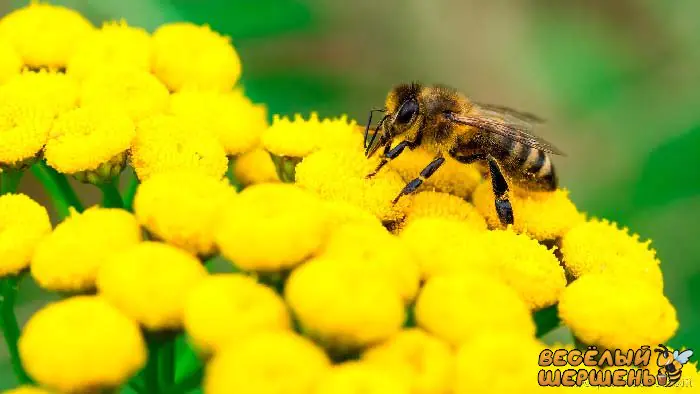
Small conclusion
Any propolis face mask will be useful, because the power of this beekeeping product is simply incredibly wide. In addition to the fact that there are the above recipes for preparing cosmetics based on this ingredient at home, there are also ready-made cosmetic masks produced in industrial quantities. Today, alginate masks with propolis are often found, which are used by cosmetologists in their professional activities, and Korean fabric propolis masks have also become especially popular, which only confirms the fact that the effectiveness of skin care with the help of preparations prepared on the basis of bee glue is as high as possible.
Sincerely, the family apiary "Veselyi Hornet"



